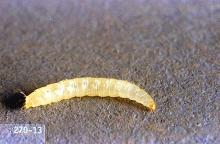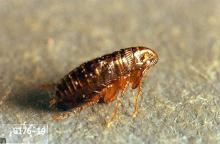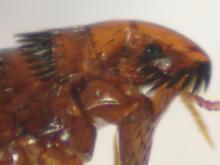Includes
Cat flea (Ctenocephalides felis)
Dog flea (Ctenocephalides canis)
Human flea (Pulex irritans)
Pest description and damage Fleas are nest parasites, moving between the host animal and the host's nest. Eggs are laid and larvae develop in the nest. Adults can survive long periods without a blood meal. Larvae do not feed on blood. Fleas may transmit disease and internal parasites (tapeworms).
Management
See also:
Public health pests-Fleas
Preventive treatments for pets include systemic hormones (Lufenuron/Program) and insecticides (Fipronil/Frontline) and nonsystemic insecticides (imidacloprid/Advantage). Pets should first be shampooed, then treated with a quality flea-control product. Consult a veterinarian to determine which flea product is best for your pet.
For house infestations, thoroughly vacuum nesting areas (pet beds, rugs, furniture, etc.). Laundering machine-washable items is advisable, whenever possible. Treat infested areas, such as carpets and baseboards, with a product labeled for interior treatment for fleas (usually linalool, permethrin or pyriproxyfen). Commercial applicators may use Premise (containing imidacloprid). It is particularly important with flea products to read and follow label instructions carefully and to observe cautions because the application is inside the home. Total release aerosols ("bombs") or aerosol space sprays are not recommended, as the pesticide does not reach the area where fleas reside.
For further information:
Fleas: treatment and prevention. Oregon Veterinary Association. https://www.oregonvma.org/care-health/companion-animals/fleas





